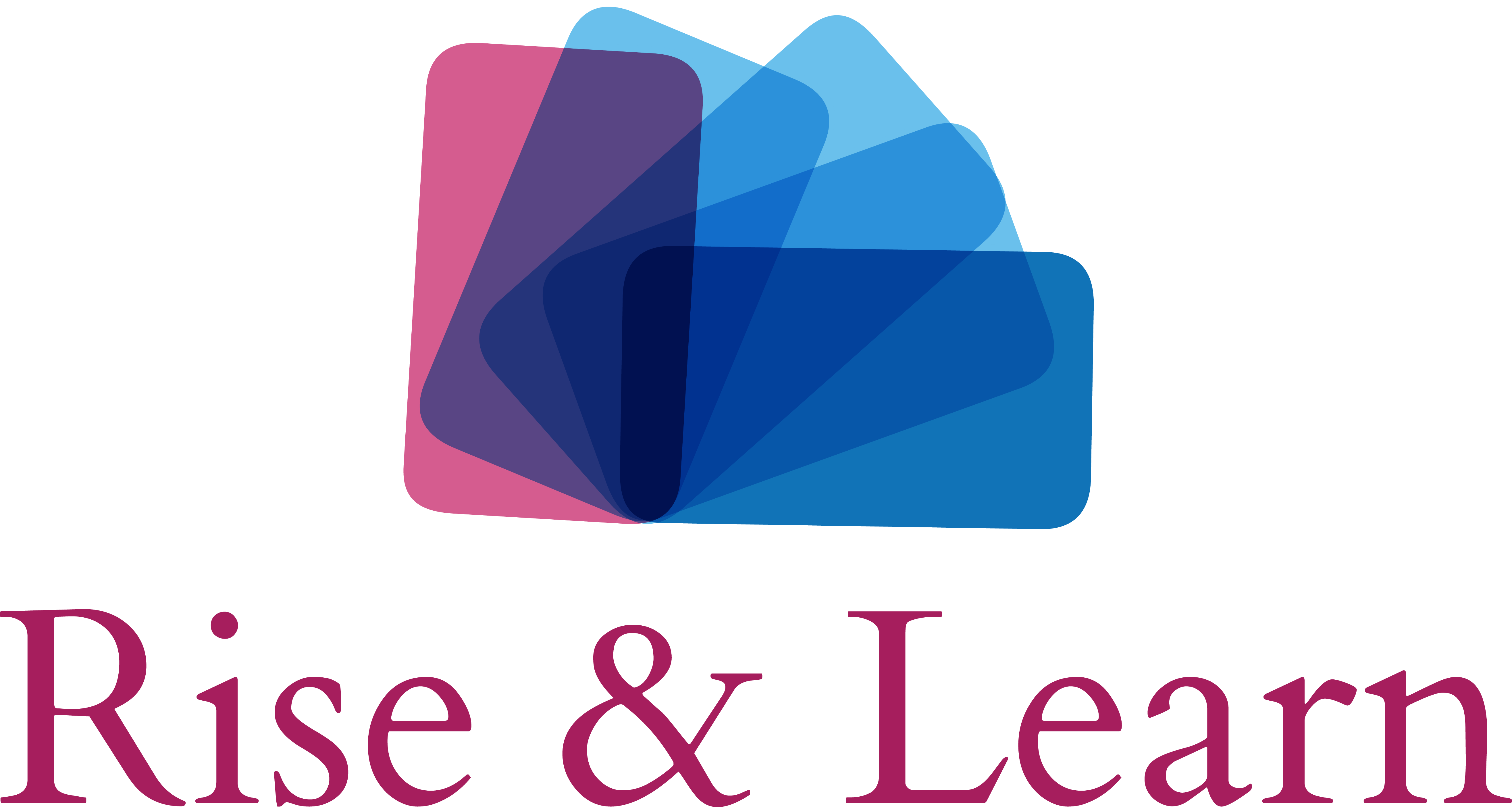Exploring Virtual Collaboration
Goodbye e-mail and intranet portals; hello cloud-powered, integrated, collaborative platforms! Digital technology enables colleagues working on a team to connect and work together, no matter how remote their location. Quick, reliable communication enables and facilitates working together as people telecommute from home.
In this course, you’ll learn the benefits of virtual collaboration when working with others, best practices for its successful implementation, and how to choose the right collaboration technology.
You’ll also learn how to avoid common mistakes when rolling out virtual collaboration. And you’ll explore the key steps for leading and being a part of a virtual team.
40 Minutes
- Exploring Virtual Collaboration
- Identify the benefits of virtual collaboration
- Identify best practices for enabling virtual collaboration
- Recognize the considerations for choosing collaboration technology
- Describe how to avoid common mistakes in rolling out virtual collaboration at an organization
- Identify key best practices for leading a virtual team
- Identify key best practices for virtual team members
- Knowledge Check: Virtual Collaboration
Establishing Effective Virtual Teams
Building and managing teams is enough of a challenge when everyone is in the same location. Collaboration when working on a team that’s virtual requires even more commitment.
In this course, you’ll learn about teamwork and team leadership when working on a virtual team. You’ll cover remote management and tactics for communication, assessment, and meetings for virtual teams.
50 Minuets
- Describe the main areas of concern for a remote manager
- Recall guidelines for establishing relationships with team members
- List communication areas in which virtual managers need to establish team standards
- Categorize communication tools as synchronous or asynchronous
- Recall strategies for supporting and encouraging virtual team members
- Recognize guidelines for managing performance among virtual team members
- Recall guidelines for managing remote team meetings
- Recognize strategies for establishing and managing a virtual team that can work effectively together
Facing Virtual Team Challenges
Virtual teams can face the same difficulties as other teams, but also have unique challenges. In this course, you’ll learn how to handle challenges facing your team, and how to evaluate your own style.
40 Minutes
- Recall tactics for ensuring equal management of onsite and offsite team members
- List tactics for managing teamwork spread across multiple time zones
- Identify strategies for ensuring respectful treatment of all members of a diverse team
- Name approaches for avoiding and handling conflict among remote team members
- Apply strategies for overcoming communication difficulties faced by a geographically diverse team
- Recognize the importance of reflecting on your management approach
- Recognize strategies for working around typical challenges facing remote or blended teams
Contributing as a Virtual Team Member
Companies often opt to create virtual teams in place of on-site teams. This allows employees to work from home or remote locations. However, if not managed appropriately, remote working may cause breakdowns in communication, collaboration, and teamwork.
In this course, you’ll learn how to develop the skills you need to show team leadership and be an effective member of a virtual team. You’ll explore personal traits that are useful when working on a team remotely.
You’ll also learn strategies to stay connected with other team members, and ways to manage your time and overcome the challenges associated with managing teams remotely.
30 Minutes
- Identify the traits that a good virtual team member should possess
- Identify ways of staying connected and communicating successfully with your team
- Identify some of the challenges associated with working remotely
- Identify some of the challenges and considerations associated with managing your time as a virtual team member
- Knowledge Check: Contributing as a Virtual Team Member
Reaching Efficient Solutions with Computational Thinking
The power of computers to carry out incredibly complex calculations quickly has revolutionized how organizations go about solving problems. Indeed, using computational thinking in conjunction with human intelligence can unleash the full power of a company’s problem-solving abilities.
In this course, you’ll learn the characteristics of computational thinking, including problem expression, as well as of its core techniques, such as decomposition and pattern recognition.
You’ll also learn how abstraction is used in logical problem solving to build algorithms that create and evaluate business solutions.
40 Minutes
- Reaching Efficient Solutions with Computational Thinking
- Identify the characteristics of computational thinking
- Identify how to perform decomposition in computational thinking
- Recognize methods for pattern recognition in computational thinking
- Identify techniques for using abstraction in computational thinking
- Recognize a properly executed process for building an algorithm
- Identify methods for evaluating the efficiency of solutions in computational thinking
- Knowledge Check: Computational Thinking
Growing Value through Algorithmic Business
Evidence-based decision making is vital for business growth. Algorithm design enables organizations to use data to solve business problems and improve business outcomes.
Decomposition, pattern recognition, abstraction and algorithms are the cornerstones of the computational thinking that informs evidence-based decisions in the digital economy.
This course covers the benefits, characteristics, and best practices of algorithmic business and thinking.
30 Minutes
- Identify key characteristics about algorithmic business
- Recognize the key organizational areas that algorithmic business can help you improve and grow
- Identify four steps for leveraging business algorithms in your organization
- Identify best practices for gaining organizational buy-in to algorithmic business
- Identify five popular algorithms used in business today
- Knowledge Check: Benefiting from Algorithmic Business and Thinking
Cultivating a Passion for Learning
Having a passion for learning and developing talent helps you stay engaged, motivated, and driven. New challenges require new ideas, new solutions, and new skills and knowledge. And this requires continuous learning and self-development.
Being a passionate learner is crucial to staying motivated, engaged, and up to date. Therefore, organizations need to invest in developing employees.
In this course, you’ll explore the benefits, best practices, and techniques of using organizational learning for developing people. You’ll learn about the characteristics of passionate learners.
You’ll also learn about various learning preferences, techniques, and best practices for leveraging them. And you’ll explore how to develop a culture of learning in your organization.
30 Minutes
- Cultivating a Passion for Learning
- Identify the key benefits of having a passion for learning
- Recognize the common characteristics of lifelong learners
- Recognize different learning preferences
- Identify best practices for effective lifelong learning
- Recognize techniques for fostering a passion for learning in others
- Knowledge Check: Cultivating Lifelong Learning
Developing a Growth Mind-set
In the workplace, there are two specific types of mindsets, or attitudes, that can either promote personal growth and resilience or hamper an employee’s performance.
People with a growth mindset achieve ever-higher levels of productivity and can help their organizations thrive; by contrast, people with a fixed mindset tend not to develop professionally, and may hinder an organization’s goals.
In this course, you’ll learn about the characteristics of a growth mindset, such as perseverance, and how to distinguish it from a fixed mindset. You’ll also explore methods of developing mindsets for success, and how professional growth can benefit you and your organization.
30 Minutes
- Developing a Growth Mind-set
- Identify the characteristics of a growth mind-set
- Identify steps that help promote a growth mind-set
- Identify key habits that foster a long term growth mind-set
- Recognize key characteristics that signify a growth mind-set exists within the workplace culture
- Identify actions that encourage a growth mind-set in daily work life
- Knowledge Check: Developing a Growth Mind-set
Keeping Your Skillset Current in the Digital Economy
The digital economy is revolutionizing the world of work. To stay relevant, individuals across all industries need to be open to continuous learning and developing talent. Through organizational learning, you can start developing employees by ensuring they are learning the necessary skills.
In this course, you’ll learn some of the key ways in which the world of work is changing and the skills that are in high demand. You’ll also explore ways to choose what to learn in order to keep your skill set current, as well as develop people and encourage self-development. And you’ll also explore strategies to help advance your career in the digital economy.
30 Minutes
- Recognize key ways that work is changing in the digital economy
- Recognize categories of skills in high demand in the digital economy
- Recognize ways to choose what and how to learn to keep your skill set current in the digital economy
- Identify strategies for advancing your career in the digital economy
- Knowledge Check: Keeping Your Skillset Current
Cultivating Cross-functional Team Collaboration
Today’s challenging business world demands that organizations move beyond traditional silos and toward broader, cross-functional collaboration. This means that organizations have to adeptly utilize skills and creative ideas from functions across the organization.
And this requires effort and support from leadership. But in the end, it can maximize what an organization can accomplish.
This course explores how to establish and cultivate true cross-functional team collaboration. In it, you’ll learn about the characteristics and key benefits of effective cross-functional team collaboration. You’ll also learn how to assess your team’s cross-functional collaboration readiness using relevant software solutions.
And you’ll explore how to overcome potential barriers to achieve true cross-functional collaboration throughout your organization.
40 Minutes
- Cultivating Cross-functional Team Collaboration
- Identify the key benefits of effective cross-functional team collaboration
- Identify characteristics of effective cross-functional collaboration teams
- Identify the stages of the disciplined evaluation framework for assessing and preparing for organizational collaboration readiness
- Identify organizational strategies that you can use to establish and cultivate effective cross-functional collaboration
- Distinguish between types of collaboration software solutions
- Recognize best practices for mitigating risks inherent to cross-functional collaboration
- Knowledge Check: Cultivating Collaboration
Enabling Business-IT Collaboration and Strategic Alignment
Successful business-IT alignment is rapidly gaining importance. In today’s business world, technological and digital innovation are constantly changing the rulebook for running a competitive business. To thrive in this environment, businesses require a digital transformation strategy that encourages the alignment of the business and IT functions.
They can then use cross-functional teams to efficiently adapt to technological changes and opportunities.
In this course, you´ll learn about effective business-IT collaboration. You’ll also explore the critical concepts, processes, and best practices for establishing and sustaining effective strategic alignment while avoiding pitfalls common to these initiatives. And you’ll explore how you can sustain success toward true digital transformation.
40 Minutes
- Enabling Business-IT Collaboration and Strategic Alignment
- Identify the key benefits of aligning business and IT strategy
- Recognize the key elements of the ACME framework
- Distinguish between the organizational components necessary for true business-IT alignment
- Sequence the steps in the strategic alignment process
- Recognize strategies for avoiding pitfalls common to strategic alignment initiatives
- Identify best practices for continuing and sustaining successful business-IT strategic alignment
- Knowledge Check: Enabling Business-IT Alignment
Achieving Digital Dexterity
Flexibility, agility, and the ability to efficiently change between activities are critical in today’s tech-centric environment. Digital innovation has transformed the business landscape. Computer data informs our decision making and computerized processes play a major part in the jobs we do. Businesses committed to embracing digital agility are the ones that excel.
In this course, you’ll explore the benefits and techniques for achieving organizational digital dexterity. You’ll explore how to establish a tech-centric mindset and how to digitize practices to support digital dexterity.
In addition, you’ll learn how to gauge organizational progress toward digital dexterity and the associated strategies to sustain it.
30 Minutes
- Achieving Digital Dexterity
- Recognize the key attributes of digitally dexterous organizations
- Recognize the steps for building a digital-first mindset in the organization
- Identify the steps for digitizing practices to support digital dexterity
- Distinguish between the stages of digital dexterity and the associated strategies to keep moving forward
- Recognize how to assess your organization’s current digital dexterity position
- Knowledge Check: Becoming a Dexterous Organization
Building Innovation Cultures and Leaders
Innovating is the only way to adapt and keep speed with the pace of change in today’s business world. Building and supporting an innovative culture is the responsibility of leaders and employees across organizational hierarchies and is aided by an effective change management process.
In this course, you’ll learn about business innovation cultures and types of innovation leadership. You’ll also learn about the importance of experimenting, managing change, and executing a project. Finally, you’ll learn how to attract and nurture innovation in your organization.
50 Minutes
- Match innovation models to their descriptions
- Recall characteristics of committed and passionate innovation cultures and leaders
- Identify characteristics of how business cultures and leaders can support innovation through experimentation
- Describe ways to manage risk in an innovation culture
- Specify ways of ensuring quick project implementation in an innovation culture
- Recognize actions that are likely to nurture innovators
- Identify examples of how to commit to innovation
- Recognize characteristics of an innovation culture and innovation leader
Strategies for Managing Technical Teams
Effective team leadership in the dynamic technology field is integral to business success, but managing technical teams has unique hurdles.
In this course, you’ll learn what the hurdles are when working on a team and managing teams in the technology field. You’ll cover the qualities of a tech manager, and tips to manage tech teamwork to encourage effective collaboration.
30 Minutes
- Recognize differentiating attributes of the tech industry
- Identify the characteristics ascribed to effective technical team leaders
- Recognize methods to manage a technical team effectively
- Recognize techniques that bridge the gap between technical teams and
their non-technical managers - Identify techniques for effective management of geographically and culturally diverse teams
- Knowledge Check: Cultivating Tech Team Management Skills
Leading Your Team through Change
Change is always happening. Effective team leadership means managing teams through the ongoing transition processes that facilitate change. Removing obstacles that can hinder the productive teamwork required to make these transition processes smooth is essential.
In this course, you’ll learn about types of resistance and obstacles to change and how to overcome them in a collaboration. You’ll also learn about how to overcome barriers to introducing change at your organization. Finally, you’ll learn effective approaches for communicating change when working on a team.
50 Minutes
- Match sources of employee resistance to change to examples
- Match types of change resistance to actions for dealing with them
- Recognize various change obstacles in an organization
- Identify tactics for overcoming obstacles to change
- Match information-based roots of inertia with examples of how to overcome them
- Identify examples of ways to overcome action-related employee inertia
- Recognize appropriate ways to communicate change
- Recognize tactics for effectively leading change in your organization
Getting Your Pitch Heard
Innovation, disruption, and revolutionary ideas are the stuff of business success. But unless you can get those ideas across to the people in your organization how matter, they’re destined to remain pipe-dreams.
Bland business presentations aren’t doing your ideas justice and boring PowerPoint presentations are blunting your message.But effective verbal communication, public speaking and presentation skills can be cultivated and improved.
This course looks at methods for presenting your ideas in a convincing, succinct, and confident manner that will get them heard and given the attention they deserve.
30 Minutes
- Identify statements that describe the attributes of a good idea
- Recognize the elements that can hinder a successful pitch
- Identify the needs of your target audience
- Identify the essential elements of a convincing pitch
- Identify techniques for maximizing the impact of your pitch in a group setting
- Knowledge Check: Making a Pitch
Championing Digital Transformation
Digital technologies and advancements are rapidly changing the business landscape, and organizations that support and embrace the ever-changing technology-driven environment thrive.
In this course, you’ll learn best practices for enabling and championing digital transformation in your organization.
40 Minutes
- Identify key contributions that champions make to help drive successful digital transformation
- Recognize the steps for establishing and supporting a digital transformation initiative in the organization
- Identify the key elements in a digital transformation roadmap
- Recognize the key metrics you should use to measure digital transformation progress in the organization
- Recognize best practices for overcoming common challenges to digital transformation initiatives
- Knowledge Check: Supporting Digital Transformation in your Organization
Understanding the Digital Customer
Today’s digital customer is a new breed, no longer easily defined by age or generation. They are digital natives, online savvy, and using multiple channels to conduct their day to day affairs.
In this course, you will learn the characteristics of digital customers and how the online world shapes their expectations. You’ll learn how to utilize data and analytics using tools like conversion rate optimization and funnel analytics to build a better customer experience. You will also come to recognize the value of data privacy and the trust involved in holding customer information.
Finally, you’ll learn the value of maintaining the human connection online and actions an organization must take to foster the innovation necessary for meeting customer service customer experience expectations.
40 Minutes
- Identify key characteristics of a contemporary digital customer
- Identify how the digital world shapes the demands of the customer
- Recognize how data and analytics are used to promote a better digital experience
- Recognize ways to maintain a human connection in the digital world while meeting digital customers’ needs
- Recognize the actions an organization can take to create brand energy in the digital world
- Knowledge Check: Understanding the Digital Customer
Optimizing the Customer Experience
Today’s customer is a new breed, often a digital native who spends much of their time online in the digital world. They have different priorities and expectations than generations of customers past.
In this course, you will learn about meeting the needs and expectations of today’s digital customers, including omnichannel and utilizing algorithm-savvy design. You’ll also learn about way finding: ways to shape and influence their customer journey, as well as methods to individualize their customer experience (CX) through methods like digital body language. Finally, you’ll learn about protecting and partnering in their data privacy and security.
40 Minutes
- Recognize methods for meeting the needs and expectations of digital customers
- Identify the principles for moving customers across space, time, and platform with minimal friction using digital wayfinding
- Identify critical actions for building experiences that resonant emotionally with the customer
- Recognize actions for moving from personalization to individualization to improve the customer experience
- Identify the mutual benefits of allowing customers to make decisions on sharing data and information
- Knowledge Check: Taking Action to Optimize the Customer Experience
Serving Digital Customers with Omnichannel
Offering an omnichannel customer experience (CX) is a must in today’s digital world, but implementing it comes at a cost.
In this course, you will learn about how omnichannel affects the CX, and in turn, how the CX drives omnichannel innovation. You will also learn about using data analysis and customer journey mapping to uncover customer expectations, and how these can be used to estimate Customer Lifetime Value (CLV) and to help tailor an agile approach to successful omnichannel design and investment.
Finally, you’ll learn about the challenges to an omnichannel approach, such as data privacy and protection, and how to mitigate them.
40 Minutes
- Identify the characteristics of the omnichannel approach to sales that help address the expectations of digital customers
- Identify recommended actions for designing and delivering an optimal digital customer experience through omnichannel
- Recognize and mitigate the challenges of omnichannel processes and implementation
- Recognize actions that improve the experience after the customer’s click to purchase
- Identify the actions necessary for successful omnichannel implementation
- Knowledge Check: Using Omnichannel to Enhance the Customer Experience








